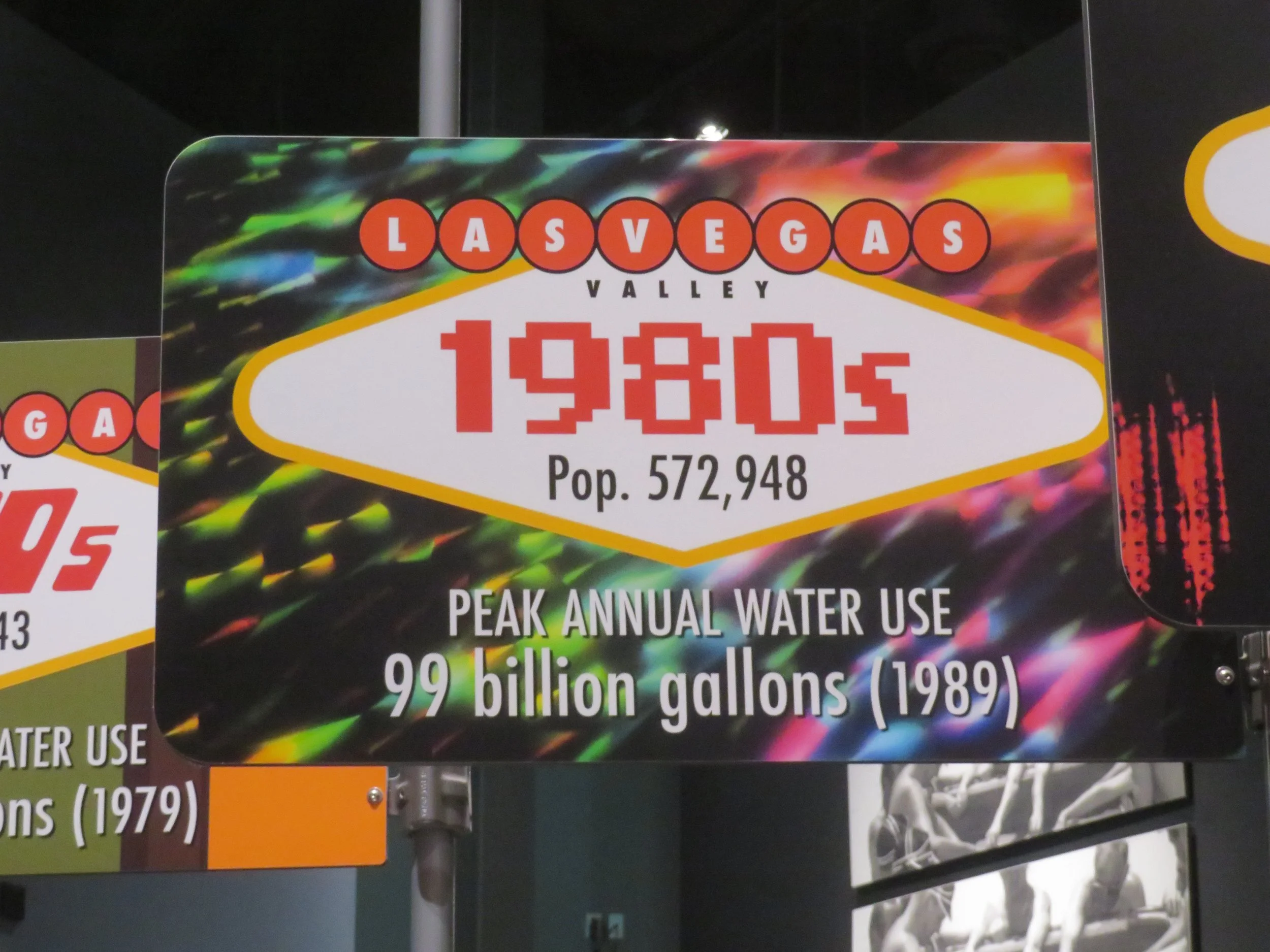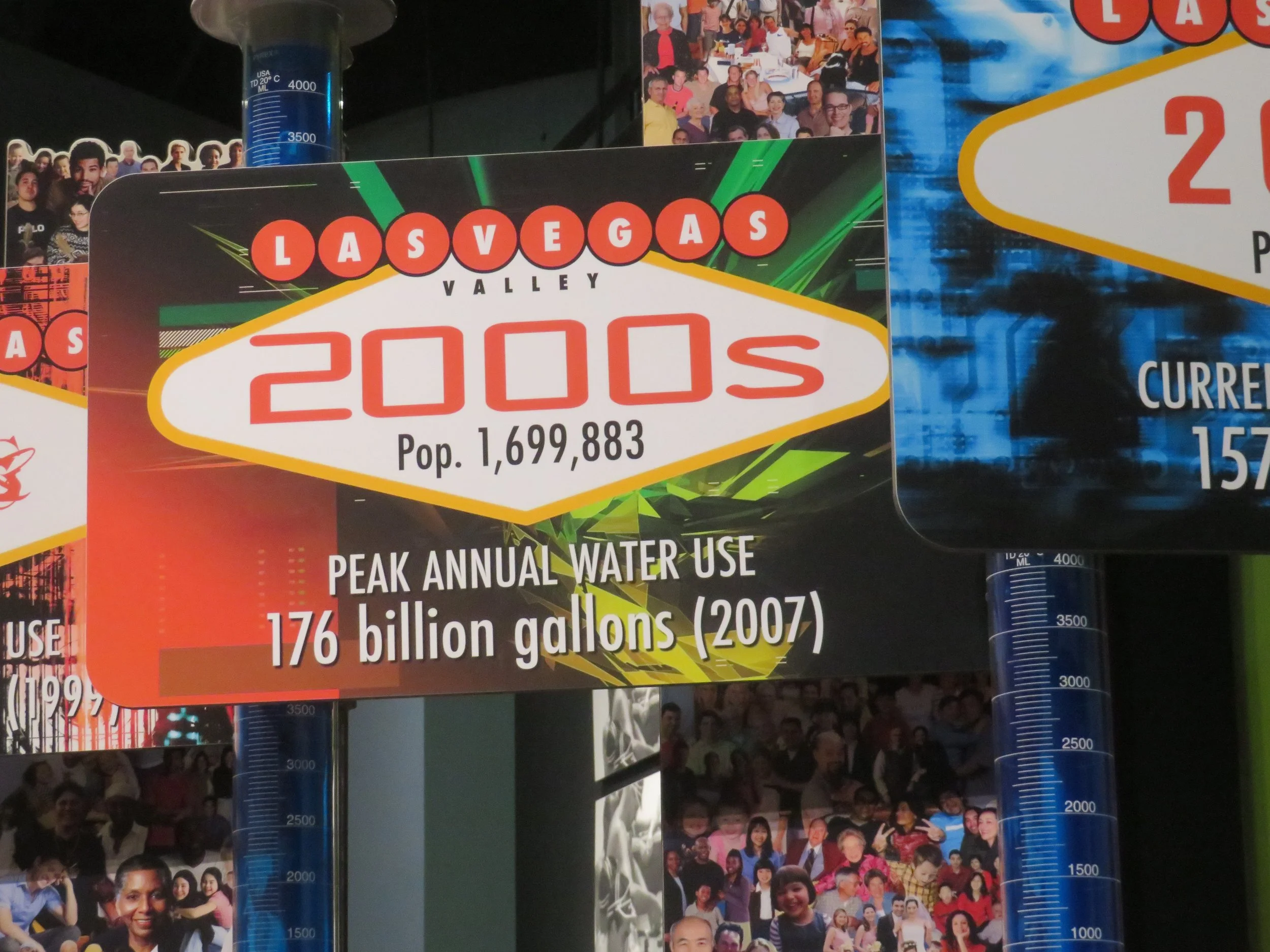Watering the Desert
/In 1829, when the Spanish explorer and trader Antonio Armijo discovered an oasis in the middle of the Mojave Desert, little did he know what it would become. He was establishing and documenting a new, more direct trade route on the Old Spanish Trail from the town of Abiquiú in Neuvo Mexico (now Ab-EE-cay, New Mexico) to what is now San Gabriel, California. He foresaw that the natural springs at the oasis would provide a great stopping point along the route to rest and refresh the horses and mules of future traders and travelers, and called it Las Vegas, which translates to “The Meadows” in English.
Armijo’s route was shorter and faster than previous routes. Source: National Park Service
A few hardy folks settled in the area, but it wasn’t until 1864 when the U.S. Army built Fort Baker, that the population began to grow. The town of Las Vegas was officially founded in 1905 when a railroad linking Los Angeles and Salt Lake City was completed. With the legalization of casino gambling and the construction of the Hoover Dam in the 1930s, the town grew into a city, and has continued to grow. The population of the metro area now exceeds 2.3 million.
For most of that time, water was plentiful – first from the original springs in the area, then from the abundant water in Lake Mead. Ninety percent of the homes built in the sprawling city had nice green lawns, and a large percentage had pools. Water, water everywhere, it seemed.
Then, in the early 2000s, a long drought began in the western states. The level of Lake Mead began dropping for the first time since it was built, and with the population still growing, it became obvious that changes had to be made in our water usage. The Southern Nevada Water Authority (SNWA) began and coordinated a major water conservation effort, focusing primarily on outdoor water use, which evaporates in our arid climate and isn’t returned to Lake Mead. In contrast, nearly all indoor water is treated and recycled back to the reservoir.
The SNWA enacted a host of measures to reduce water usage. These include:
Grass prohibitions. A statewide law passed in 2021 bans new grass installations on all new developments.
Watering schedule. There are mandatory seasonal watering schedules for residential homes, with severe restrictions on watering duration and time of day. For example, in the fall, we are limited to watering three days a week, with a maximum of 12 minutes a day total.
Golf courses. No new golf courses are allowed to use water from Lake Mead. Existing golf courses are encouraged to use wastewater for irrigation.
Rebates for grass removal. SNWA offers cash incentives to replace grass lawns with xeriscaping. The current rebate is $5/sq-ft, and has resulted in the replacement of more than 247 million square feet of turf – saving more than 203 billion gallons of water!
Other rebates. Rebates are offered for upgrading to water efficient toilets, smart irrigation controllers and pool covers.
So, how much has all these measures helped? A lot! Since 2002, our population has increased by 35% while our totalwater consumption has actually decreased by 52%! In the 1980s, we used a whopping 542 gallons of water per person per day on average – now we use just about 100 gallons per person per day. Even 100 gallons per day per person still seems like a lot; I can’t imagine Marcie and I use 200 gallons of water each day, but bear in mind that a large portion of that water is used by the millions of tourists who come here and flush our toilets and take showers (both of which are highly encouraged to support the local economy).
Still, even with all the measures the SNWA has taken to reduce water consumption, it’s not enough… the level of Lake Mead has continued to drop, albeit not as fast as previously. The drought that began in 2000 is still ongoing, making it the worst in recorded history. Earlier this year, Las Vegas ended its second longest stretch of days without measurable rainfall – 214 days. (The record was in 2020 which lasted 220 days.)
Nevada gets only a small percentage of the water provided by the Colorado river
In addition to the ongoing drought, another reason that Lake Mead has dropped 150 feet below its level in 2000 is that while we may be very conscientious about conserving water here, Nevada uses only 2% of the water provided by the Colorado River. Six other states and Mexico get the lion’s share, and they haven’t worked nearly as hard at conserving water as the SNWA has. This is changing, however, as the other states, especially Colorado and Arizona, are stepping up their water conservation efforts.










